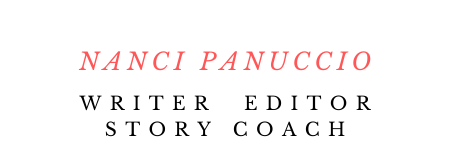Your memoir was turned down by another publisher.
You just received a form rejection letter – the worst kind – from an agent.
Or maybe the feedback from your writer group flattened you.
You thought your story was so much closer.
Setbacks can crush us. And cause even the most resilient writers to believe they lack the requisite talent to write anything worth reading.
But talent has little to do with success.
And failure gets a bad rap.
Mind The Gap
There’s a gap between your vision – what Ira Glass calls your “good taste” – and what’s on the page right now.
A divide between your current capabilities and what you’re striving to do.
Those gaps are part and parcel of any artistic endeavor.
And they lead to your biggest breakthroughs.
The gap is the struggle. It’s where you’re forced to slow down, to see precisely where you need to course-correct in order to make your story or book the absolute best it can be.
Progress isn’t linear
It’s a bumpy road of plateaus, successes, failures, doubts, confusion, and setbacks.
All that elegant, graceful prose you admire from your favorite authors is the end result. Not the hours upon hours, the months, years of frustration, dogged persistence, practice, and yes, rejection – that went into making the book crystallized into it’s ultimate, polished and gleaming form.
Writing, just like any other art or sport, requires rigorous practice.
Deep Practice
It’s not about practicing harder, but deeper.
Deep practice means struggling consciously. You’re writing at the edges of your ability, right where you make mistakes, where it feels most frustrating and impossible –the impasse, the dip, the place where many of us give up.
Those obstacles are inherent in the writing process which, by necessity, is messy.
Robert Bjork, chair of psychology at UCLA, who has spent his career studying how we learn, describes our brain as a living structure, a complex scaffold that’s nearly infinite in size. The more we encounter and tackle difficulties in our writing, the more scaffolding we build. We create impulses. And we excel faster.
Deep practice is stepping back from your work subjectively, or with a writing coach, with a keen eye to what’s not working yet. You capture failure, collaborate with it and ultimately transform it into skill. You make more progress in less time.
Target the Struggle
Revising blindly doesn’t lead to improvement.
Reaching just beyond what you’re capable of does.
In writing, there are a multitude of elements we need to be concerned with, and there are only one or two of those elements we can focus on at any given time. There’s the clarity of our sentences. Point of view and narrative distance. Language and imagery. Selection of details. Conflict that’s not just in the story itself, but right on the sentence level. Beginnings and endings to consider and reconsider. And then there’s all that comes in between that gets our characters from A to Z.
Focus on one or two elements at a time.
Those one or two elements will impact the entire work and give you plenty of foundation fuel as you move forward with revision.
No discussion of point of view, for example, is separate from character, conflict, or imagery. No discussion of conflict is separate from character, structure, scene creation or plot. It’s all an intricate weave. But if we tease out certain elements, we can practice deliberately, with clear focus and intention
Take the aspiring ballerina learning to pirouette. She works first on balancing on one foot. Then up on the toes of that foot. This alone requires strengthening the ankles and core, attention to the placement of the pelvis, and head weight. Once she gets those mechanics down, she practices quarter turns. Then half turns. Full turns. And eventually, multiple turns. All the while she hones the timing between the plie’ with the movement of her arms so she can get the right amount of rotation and momentum. She practices spotting – keeping her gaze fixated as long as possible on a single spot so she can rotate with steadiness.
So there are several small components that go into one single turn. And she practices each one separately over time so she can pull it all together and make it feel and look effortless.
Tiny Shifts Make a Huge Difference
Have you ever seen before and after Photoshops? Where women are transformed from average-looking to drop-dead gorgeous? It’s all in the math. There’s a golden ratio of symmetry we innately find alluring. For example, when your eye width is the same as the distance between the bottom of your nose and upper lip, that one millimeter can be the difference between pretty and beautiful.
The same holds true for writing. When you hit a roadblock in your work, when it feels impossible, you’re always one or two-millimeter shifts from major improvement.
Those small, incremental efforts produce big lasting results.
Go for the Small Wins
Mastery isn’t built on the broad strokes, but on the small wins over time.
The struggle is where you have the most leverage. What’s on the page right now might not be what you set out to create, but it’s leading you to your next breakthrough. There’s no such thing as failure.
Writing requires a balance of patience and persistence.
To be patient is to know that whenever you’re reaching to get better than you are, setbacks are a given.
To be persistent is to practice deeply. To target the struggle. To celebrate every small, incremental breakthrough.
Remember, you’re always only one or two millimeters off from writing your best work yet.
Over to you…
Share a time when you faced a challenging writing setback. How did you overcome it? What insights can you share?

